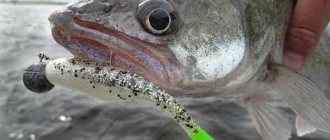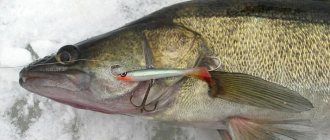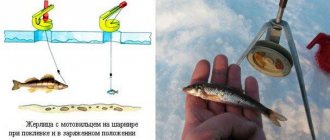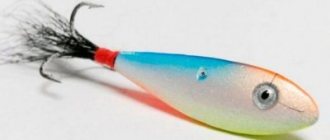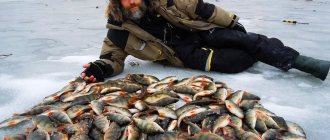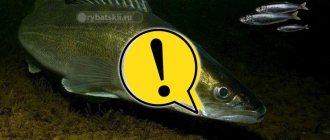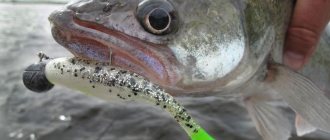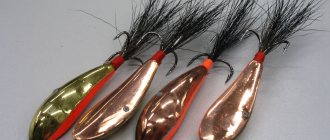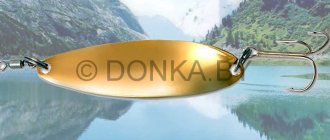Pike perch food
Pike perch is a predatory fish. At a young age, it eats planktonic crustaceans, but after reaching 30 mm in length it switches to a fish diet - first on fry larvae, then on a variety of fish (dace, gudgeons, roach, bleak, ruffe, etc.). Adults are not inferior in gluttony to pikes. Moreover, unlike pike, pike perch aggressively pursues its prey. To gain 1 kg of weight, pike perch needs to consume 3.3 kg of prey. This fish reaches a kilogram weight by 2 years.
Juveniles stick to schools. Moreover, the larger the pike perch, the smaller the flock. Adult pike perch prefers solitary hunting.
Fishing in spring
In the last days of April or early May, pike perch begins to actively feed. It is observed immediately after spawning. At this time, flocks of predators stay in shallow bays near reeds, bushes and snags. To find pike perch, you need to pay attention to spawning bleak, roach or other white fish. The predator will definitely be nearby. At this time, he greedily takes almost all the bait (we are talking about live bait and artificial bait). It is best to catch pike perch in the spring using bottom tackle. The most primitive equipment is taken (a fishing line with a diameter of 0.35 mm is wound on a reel). Since this species lives in bodies of water with a current, the sinker is set weighing 60–100 grams. It should not be carried to the side after casting, much less washed to the shore. A leash is tied in front of the sinker at a distance of 30 cm. Since pike perch almost never bites through the line, like pike, there is no need to install a metal one. A leash made from regular fishing line with a length of 80 cm to 1 meter will do just fine. Hooks need to be sharp and large. The sting should be slightly bent to the side so that during the jerk the fish hooks itself. Live bait is used as bait for the donk. Bleak, roach, and gudgeon are best suited.
It is also recommended to catch pike perch on a retractable leash in the spring. This equipment involves the use of a spinning rod. Silicone twisters and vibrotails are always used as bait. Now let's talk more about the equipment itself. A sinker is attached to the end of the main line; it is best to take models with one eye or a “Cheburashka”. Weight - no more than 30 grams, if the current is not strong, then 15 grams will be enough. A regular leash is tied at a distance of approximately 40 cm from the sinker. Its length should be one meter. A silicone bait is attached to the end, but only without a jig head. It is not needed in this equipment. This installation is simple, convenient and strong. In general, fishing with a retractable leash is most often used specifically for pike perch and its smaller “brother” - bersh.
Appearance
The body of pike perch is oblong, with small and dense scales. The gill covers are covered with scales only in the upper part. The snout is pointed, and the head is longer than or equal to the length of the body.
The pike perch has a large mouth equipped with several fangs. The other teeth are small, and the gills have spines. The mouth is similar to that of a pike.
The back of the pike perch is gray-green in color, and the belly is white. Juveniles have up to 10 stripes on the sides of the body, which become almost invisible with age. On the back there is a fin with sharp and hard rays with a speckled film stretched between them. The remaining fins are gray-yellow in color. The eyes are bulging, with a blue or purple tint.
Pike perch in a river environment
The habitats of pike perch are whirlpools, pits and steep rivers. Preference is given to places where it is easy to hide - snags and cluttered areas. Pike perch likes to be closer to the bottom - preferably sandy, especially in places where there is a sharp change in depth. Closer to the surface, this fish rises on calm evenings. For hunting, it can penetrate into shallow water.
Tactics for catching pike perch have their own characteristics, depending on the type of reservoir. For example, on a river, to fish, fishermen move in a boat along the current, and baits are sent to depths with a slow current.
Fishing for pike perch
This fish is caught where there is sufficient depth (at least 3 meters), clean water and a pebble, rocky or sandy bottom. At the same time, pike perch does not like dense algae. Unlike pike, pike perch does not hide in ambush, but moves along steep slopes and edges into the depths. Good places for fishing are places below dams and rapids, where pike perch hunt for fish weakened by the current.
The pike perch bite dies down if it is full. During this period, the fish prefers to rest in places where snags or stones accumulate. Pike perch is cautious. It is not caught with a large spoon. The best way to fish is with a minnow or small white fish. Although pike perch is a nocturnal predator, it can also be caught during the day.
The secrets of catching pike perch are based on knowledge about the periods of fish activity. Fishing occurs twice a day: before dawn (dark) and before sunrise, and from sunset to midnight. During this period, the fish approaches the shores and can even jump out of the water when hunting. After sunset, the pike perch bite becomes worse, but persists, and in the fall it may not weaken.

Catching pike perch is carried out from the bottom when it goes hunting. Moreover, in contrast to perch, pike perch does not champ when it grabs prey. The optimal time for fishing is immediately after spawning, at a water temperature of 18-20 degrees. Fishing is carried out throughout the year, but fishing conditions worsen in winter, before and during spawning. Conditions improve at the end of winter when the snow melts.
The feeding process of pike perch is characteristic. The process begins with a fight, which is different from the fight of other fish. It lasts up to half an hour - the fish chases the bleak throughout the upper layer of the reservoir. The sounds of pike perch fighting are similar to the sounds that occur when stones hit the water. During the fight, the fish do not bite the bait, but immediately after the fight the pike perch begins to bite. Fishing results directly depend on the supply of food in the reservoir. If there is insufficient food, the bite will be good even during the daytime.
At a depth of over 5 meters, live bait can move vertically (under the boat). In this case, the sinker is tapped on the bottom. When the depth is less than 5 meters, live bait is released 10-12 meters in front of the boat. If the depth is less than 2 meters, fishing makes no sense.
After the pike perch is caught, you need to return above the bite site and repeat the swim. You need to remember the place of the next bite, anchor there and continue fishing in this place. However, frequent swimming can alert the fish.
Spinning fishing
Fishing for pike perch using a spinning rod is not as common as fishing for pike. The disadvantages of spinning fishing are:
- The pike perch bite begins only in the evening;
- a good bite occurs in the pre-dawn twilight, and with dawn the bite becomes worse;
- darkness does not allow accurate casting with a spinning rod.
For spinning fishing, heavy, narrow, elongated spoons are used. Good fishing happens with wobblers and also with jigs. Sometimes several hooks are attached above the spinner on 30 cm leashes with small white twisters, or tassels made of feathers or threads.
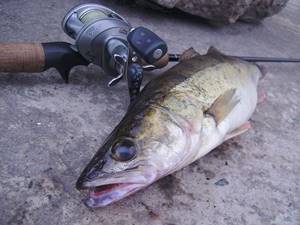
Young pike perch are schooling fish. Therefore, having caught one individual, you need to throw the spinning rod there.
Summer season
In summer, this fish loves places near breakwaters and bridge supports, near dams and under rapids. In summer, successful fishing occurs on the rifts. In many cases, successful bottom fishing is possible in well-known sites.
Autumn season
In autumn, fish prefer the deepest and quietest places in rivers with a non-silty bottom. The movement to winter sites coincides with the yellowing of birch leaves.
A good catch is achieved using bottom rods using live or dead fish. It is best caught with gudgeon or ruff.
Fishing improves starting in August, becomes excellent in September, and weakens starting in October.
Winter season
In winter, it is better to fish with a large jig with a sprat strung on it. You can also fish with a balancer or spoon.
In winter, pike perch moves little. For successful fishing, you need to establish its parking place. At this time of year, fish prefer edges with differences in depth levels. To search, holes are drilled at intervals of 15-20 meters. Along the way, the depths are determined. As soon as a difference is detected, starting from this place, the interval between holes is reduced to 1-3 meters. Fishing begins in the hole where there is the greatest difference in depth. This fish cannot be spooked by noise; on the contrary, it is believed that noise improves the pike perch’s bite.
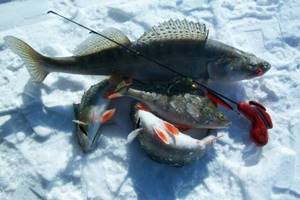
The caught fish must be quickly pulled out and fishing continued immediately. If you lose time, the flock will leave. When fishing with a spinner, breaks between retrieves can be 5-7 seconds. The spoon should be 5-10 cm from the bottom. The rise of the spoon should be smooth, but the first 5-10 cm of the rise should be carried out with acceleration. Slight swaying of the end of the fishing rod is used. You can place the spoon on the bottom and move it slightly, then lift it 5-10 cm.
If fishing is carried out at shallow depths (up to 4 meters), you can sprinkle the holes with snow, this will improve the bite.
Spring season
In the spring, the fish hunt for fry, which is why they come out of the holes. During the feeding season, pike perch are easy to catch, but difficult to spot. After the snow begins to melt, fishing improves.
Silicone baits for pike perch
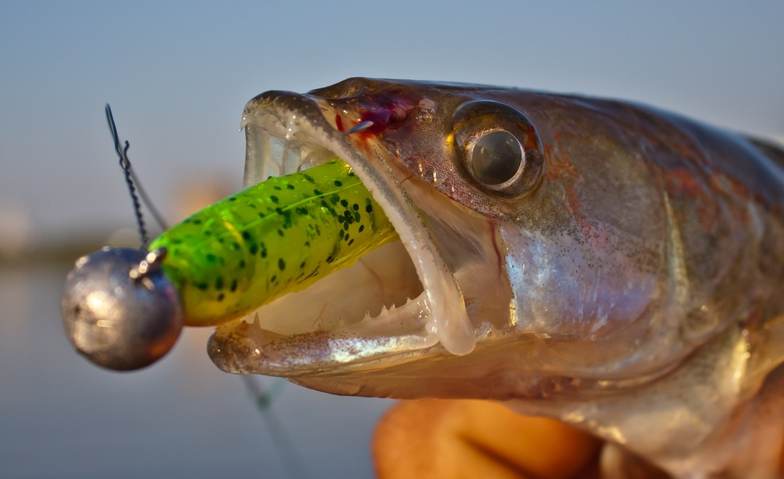
Models made of silicone are most often used for catching pike perch both from the shore and from a boat, regardless of the nature of the reservoir:
- on reservoirs;
- small rivers;
- large rivers.
When choosing silicone baits, pay attention to:
- color;
- size;
- ponytail game;
- body shape;
- the presence of ribs on the surface.
The most popular are:
- vibrotails;
- twisters.
Following them are:
- worms;
- crustaceans;
- slugs.
Keitech Swing Impact
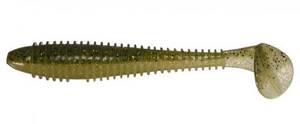
This vibrotail, which has increased softness, is often swallowed completely by the predator. The suitable size for catching pike perch is 4 inches, and the colors of the model are very diverse, ranging from natural shades to bright tones:
- gray;
- brown;
- blue;
- orange;
- green.
For hunting especially large individuals living in large rivers and reservoirs, there is a specially developed Keitech Swing Impact series - FAT (which means thick). The only disadvantage of the original models is the rather high cost. For this reason, many fishermen have quite success using cheaper copies of the Keitech Swing Impact (for example, Select Fetsh or Lucky John Spark).
Lucky John Tioga
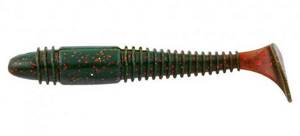
Tioga is one of the most catchy walleye baits. A movable tail, increased ribbing and a thick center provide active, lively play that attracts fanged predators. Optimal size of Iucky John Tioga:
- for boat jig - 4.5 inches;
- for coastal - 3.9.
You may be interested in: Composite wobbler from Pontoon21: Bully Boo
The color is selected experimentally, adhering to the general rule:
- In muddy water use bright colors:
- orange;
- yellow.
2. Clean - more natural:
- machine oil;
- purple.
Keitech Easy Shiner
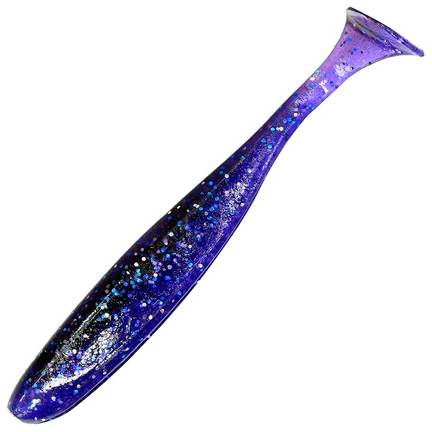
Pike perch very willingly bites on this vibrotail with a fleshy body made of edible material and an actively playing heel. The bait size is 3 to 4 inches. A wide range of shades allows you to choose any color:
- natural;
- bright (acid);
- plain;
- combined.
Keitech Easy Shiner is not cheap, but you can use quite catchy inexpensive copies (for example, Akkoi Prime).
Relax Copyto
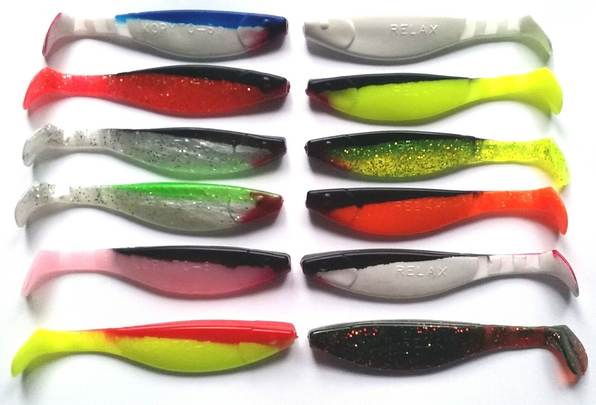
One of the most popular lures made of silicone, Relax Kopyto attracts the attention of pike perch thanks to the powerful sweeping movements of its heel. Predatory fish, focusing on the lateral line organs and significant underwater vibrations, shows a noticeable interest in Relax Kopyto.
Sawamura One'Up Shad
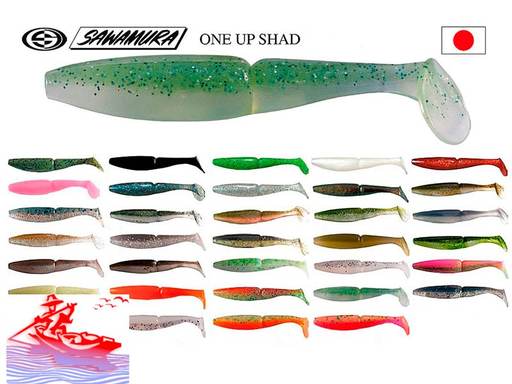
The product is made of super soft material and even with the slightest movements the tail clearly plays. Sawamura is especially attractive to walleye, and 4- to 7-inch sizes have been used successfully to target the fanged predator in cold water.
Fox Rage – Zander Pro Shad
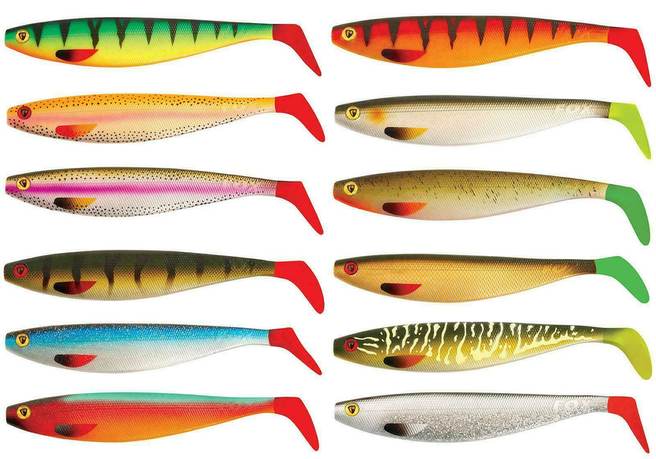
This model, made of fleshy material, is used to catch trophy specimens (available in sizes up to 14 cm). The Fox Rage – Zander Pro Shad color scheme consists primarily of a combination of natural tones, but there is also a bright “tiger” color option that can sometimes be especially catchy.
Lucky John Ballist
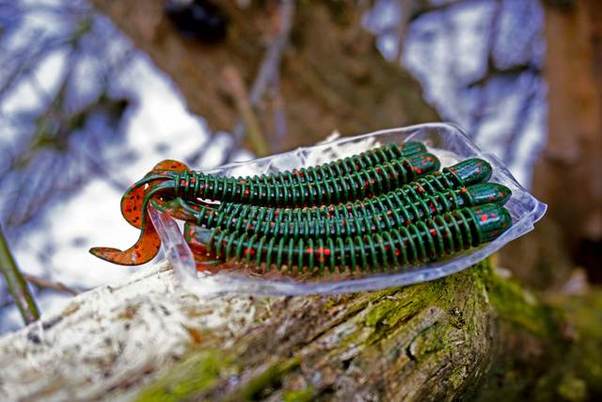
The twister bait, which imitates a larva or fry, is made of edible material and has a long, ribbed body with a ribbed surface and a small tail. Works successfully when catching pike perch on different fishing lines:
- uniform;
- stepped;
- drawing;
- twitching.
When starting fishing, you should take a 2.5-inch Lucky John Ballist, and later, if the situation requires, use a larger bait.
